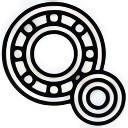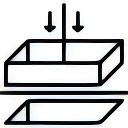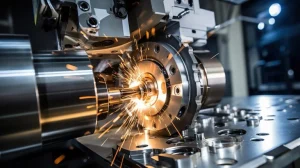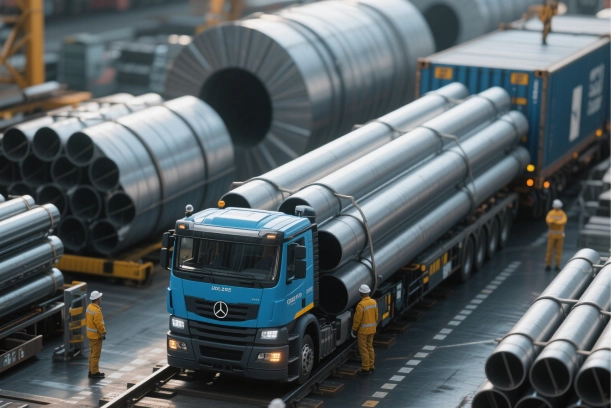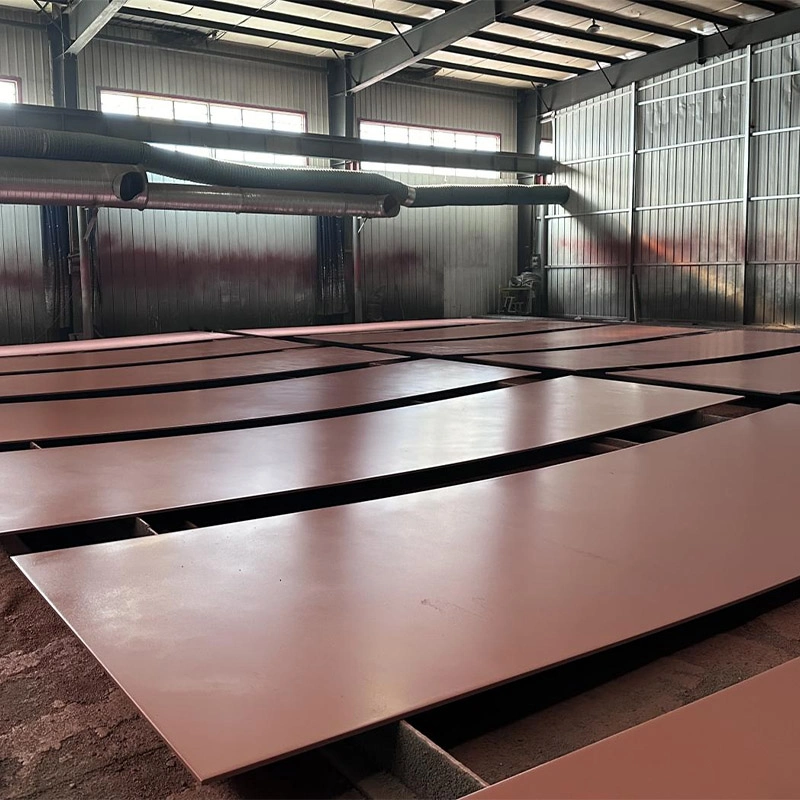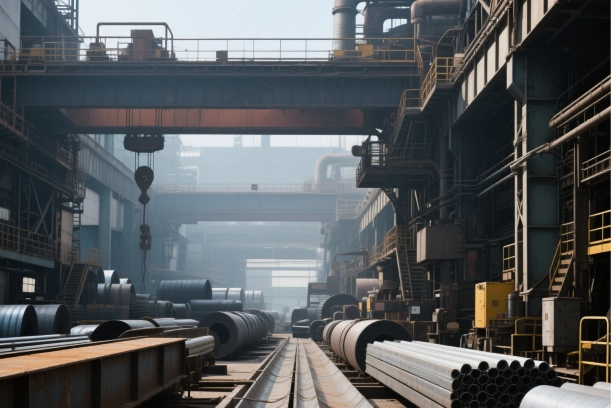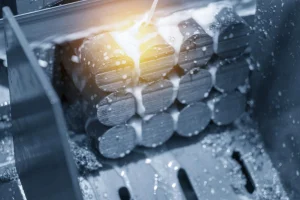
Overview of Free-Cutting Steel
Understanding Free-Cutting Steel
Free-cutting steel (also referred to as machinable steel) is a type of alloy that has been specifically designed for the purpose of optimizing machining qualities. Contains certain alloying elements such as sulfur, phosphorus or lead. Free-cutting steel is mainly used to manufacture quality parts of 100% high-precision mechanical components which require very accurate and quick operation with automation while the machining process takes place.
Importance in Modern Industries
Free-cutting steel is indispensable in today’s industry materials, specifically within industries that need high-precision parts such as the automotive, aerospace, electronics and medical device sectors. This leads to reduced wear of machining tools and a higher volume of products manufactured, contributing to that production efficiency. As a result free-cutting steel enables the creation of parts with a proven history.
Chemical Composition of Free-Cutting Steel
Sulfur (S)
Sulfur plays a significant role in free-cutting steel by creating manganese sulfide (MnS) inclusions. These inclusions facilitate effective chip formation and chip breakage, minimizing the contact area between cutting tools and the workpiece. This leads to increased tool life and productivity during machining. Which it helps to have better tool life and productivity during machining.
Lead (Pb)
Lead improves the machinability of steel during the cutting process by acting as a lubricant. In free-cutting steel it is present in the form of very fine particles and melts during machining, helping to provide a lubricant that reduces friction between the tool and workpiece.
Calcium (Ca)
This property of Ca remains responsible for helping in improving the machinability because free-cutting steel forms low melting point oxides and serves as a lubricant during machining. This is especially advantageous in high-speed machining processes where friction needs to be reduced for effective processing. Calcium improves the surface finish of finished machined parts, contributing to overall quality.
Phosphorus (P)
Phosphorus improves strength by becoming dissolved in the ferrite matrix, leading to overall hardness. Phosphorus contributes to easier breakability of chips in the process of machining which ensures smoother production flows.
Classification of Free-Cutting Steels
Sulfur Free-Cutting Steel
Sulfur content helps generate manganese sulfide inclusions, resulting in better machinability, thus making sulfur-free-cutting steel. Though this steel greatly enhances efficient machining, it is still imperative to control the level of sulfur as its excessive quantity may negatively influence mechanical characteristics which can restrict their use.
Lead Free-Cutting Steel
Lead free-cutting steel employs lead to improve its machining process ability with good mechanical properties at room temperature. Lead acts to lubricate the cut while carrying in minimum contamination that still allows steel to be dressed for high-precision applications. Lead is used to provide a smoothing ability when machined, without any major contaminations that would make the steel unsuitable for high-precision work.
Calcium Free-Cutting Steel
The only feature which is unique in calcium-free-cutting steel and other types of steel are it can form low melting point oxides has lubrication effects during machining at high speed. Targeted classification reduces the tool wear and therefore prolongs the different parts lifetime tool. It is appreciated in several manufacturing environments for its usefulness under certain machining conditions.
Key Properties of Free-Cutting Steels
Machinability
Free-cutting steel is known for its good machinability, which leads to lower tooling wear rates and greater production outputs. Differently, the positive role of sulfur and lead helps to enhance chips handling and reduce cycle times as compared to other non-free-cutting steels. That essential property makes free-cutting steel a must for automated production lines.
Electroplating Performance
Due to its fine surface quality and uniform properties the free-cutting steel shows excellent electroplating performance. This property causes it to be used as a low-cost substitute for common metals such as copper in electroplating applications. Its compatibility with plating processes increases the possible applications of free-cutting steel in manufacturing parts that will require extra coating. Factors like compatibility with plating process make free-cutting steel suitable for manufacturing components, which is further covered with other materials or coating.
Surface Finish Quality
High surface finish is one of the important properties of free-cutting steels after machining. Machining its refinement processes, as well as the intrinsic features of the alloy, lead to an excellent quality surface that complies with even severe industry standards. Industries with demanding performance specifications such as aerospace, electronics, and automotive generate applications requiring high surface finish quality. Free-cutting steels continue to be the choice material for fulfilling those needs, offering just the right compromise between function and finish.
Environmental Compliance
A critical battlefront for the manufacturing business nowadays is environmental compliance, and free-cutting steel can be used in such a way that it would clear the harshest regulations. Its alloying elements have recycling potential and comply with EU SGS environmental certification standards.
Common Industry Standards of Free-Cutting Steels
Standards for free-cutting steels are specifically defined by industry standards that show the metallurgical properties, composition and suitability of them for some particular applications. In North America, the major designations of these steels are from the AISI (American Iron and Steel Institute) and SAE Society of Automotive Engineers. Some common grades are 12L14, 1215 and 1144 which are used to denote slight differences in alloying elements as well as mechanical properties.
The percentage of elements allowing engineers and manufacturers to select materials based on their individual requirements. For example, 12L14 adds lead to improved machinability without compromising on its shear strength. As a result the common standards and labels allow senior suppliers and manufacturers to communicate effectively, making it easy for any engineering project to plan their required material as per specifications.
| Comparison Table of Free Cutting Steel Grades by Country | ||||
| NO. | GB | ASTM/AISI | DIN | JIS |
| 1 | Y12/Y12Pb | 12L14 | 9SMnPb28 | SUM24L |
| 2 | Y15/T15Pb | 12L14 | 9SMnPb36 | SUM23 |
| 3 | Y20 | 1213/1215 | 10S20 | SUM32 |
| 4 | Y30 | 1132/1144 | 11SMn30 | SUM43 |
| 5 | Y35 | 1137 | 11SMn37 | SUM43 |
| 6 | Y40Mn | 1141 | 11SMnPb37 | SUM42 |
| 7 | Y45Ca | SUM41 | ||
Applications of Free-Cutting Steels
Standard Components for Various Industries
Free-cutting steels are widely used in various industry. For instance, free-cutting steel is used in the automotive sector to manufacture components including bolts, gears and engine parts thanks to their excellent machinability enabling high-volume and efficient production
Key parts in the aerospace domain need to uphold high-pressure extensive quality and security standards, and free-cutting steels give a method for guaranteeing exactness and robustness. Fasteners, fittings and other components are crafted from free-cutting steel to precise specifications for maximum performance in har, their environment.
Home and Office Electronic Devices
Home and office electronic devices where precision, durability and looks are of paramount importance utilize a significant amount of free-cutting steels. They are commonly used in devices such as computers, televisions, and appliances for casing and structural parts. In addition, its superb electroplating performance has made free-cutting steel a commercial source of electronic devices, where both the aesthetic appearance and reliability are critical. The improved surface quality from the free-cutting steel can increase adhesion within coatings which ensures durable electronic-component finishes.
Components Requiring Precision Machining
Free-cutting steel has good cutting performance characteristics, and is typically used to produce parts such as watch components, eyeglass frames, electronic terminal pins, carburetors and other high-performing materials.
Summary and Future Trends in Free-Cutting Steel Technology
Free-cutting steel is of great significance for modern manufacturing because it provides such unique properties that make it possible to achieve rapid machining and production efficiency in a range of industries. Modern standards and categories deliver a smooth selection process for manufacturers to support the correct application of free-cutting steels in precise and reliable applications.
The future of free-cutting steels probably remains within the advance of new alloy compositions and processing. These advances will continue to push towards even greater machinability or performance combinations. Advanced steel manufacturers, such as Promispecial, are committed to researching and developing steel that uses recyclable materials to minimize its impact on the environment.



